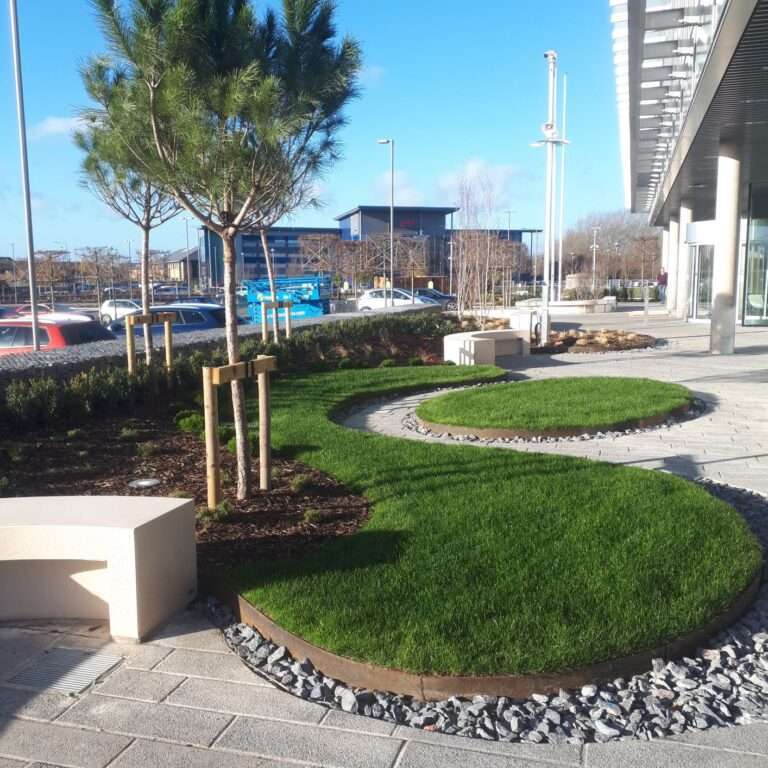Civils Solutions for Business Expansion: How to Futureproof Your Site and Stay Compliant
When your business is growing, expanding your physical premises is often a natural next step. Whether you’re adding a new warehouse, upgrading access routes, or building a new commercial unit, civil engineering solutions play a crucial role in making that growth safe, sustainable, and successful.
Civil engineering isn’t just about groundwork – it’s about creating the right foundations for long-term operational success. From drainage and roads to structural infrastructure and environmental compliance, civils work is the invisible backbone of business expansion.
In this blog, we’ll explore how the right civils solutions can streamline your business growth, what to plan for, and how to avoid costly mistakes.
What Are Civils Solutions in Business Expansion?
Civil engineering solutions (often referred to as civils) encompass the structural, ground-related and infrastructure works that prepare a site for construction or redevelopment. For expanding businesses, these may include:
- Bulk earthworks and site clearance
- Access roads, car parks and yard surfacing
- Drainage systems and SuDS compliance
- Foundations and substructures
- Service ducting and utilities coordination
- Retaining walls and boundary infrastructure
- Flood prevention and soil stabilisation
These elements ensure that any expansion is structurally sound, legally compliant, and built to last.
Why Civils Matter in Commercial Growth
Civils works are often the first on-site activities in any expansion project. They set the tone – and the timeline – for everything that follows.
1. Enabling Safe Access
As your workforce, vehicle movements or visitor numbers grow, safe and compliant access routes become critical. Civil engineering solutions allow you to:
- Upgrade existing access points
- Create new entry and exit routes
- Implement turning circles and traffic-calming features
- Install kerbs, signage, bollards, and footpaths
2. Supporting Operational Needs
From loading bays to secure perimeters, civil engineering supports the logistical needs of your site. Planning these in from the outset saves time, space and resources later.
3. Ensuring Compliance with Regulations
Civils works must comply with planning conditions, building regulations, and environmental legislation. A well-executed civils package ensures:
- SuDS (Sustainable Drainage Systems) are integrated
- Flood risk is managed
- Utilities are routed efficiently
- All structural work meets safety standards
4. Futureproofing the Site
Expanding once is challenging – expanding again can be costly. Investing in scalable civils infrastructure means you’re prepared for future growth without repeating groundwork.
Key Considerations When Planning Civils for Expansion
1. Site Survey & Topographical Planning
Begin with accurate topographical surveys and ground investigations. This ensures you understand the site’s constraints and opportunities, such as:
- Slope gradients
- Subsurface conditions
- Access limitations
These insights directly influence drainage strategy, foundation depth, and ground stability.
2. Drainage Strategy and Surface Water Management
Expanding your footprint increases hardstanding areas, which raises surface water runoff. You’ll likely need:
- Attenuation systems
- Permeable surfacing
- Soakaways or rain gardens
- Drainage channels and manholes
Not only are these critical for performance, but they’re usually mandatory for planning approval.
3. Utility Diversion and Installation
Larger sites require upgraded utilities. You may need to:
- Divert existing service lines
- Install new ducting for power, water, gas or fibre
- Coordinate with multiple utility providers
Early planning prevents major disruptions during construction or occupation.
4. Structural Civils
If your expansion includes new buildings or retaining structures, civil engineers will need to design:
- Foundations
- Load-bearing slabs
- Reinforced retaining walls
- Sub-base layers for yards and hardstanding
This structural support is fundamental to safe, compliant construction.
Common Mistakes to Avoid
- Leaving civils too late in the planning process – this causes redesigns and delays.
- Assuming the ground is ‘ready to build on’ – hidden issues like soft spots, contamination or shallow services can bring costly surprises.
- Not accounting for future access – design civils solutions to adapt as your site grows.
- Overlooking drainage regulations – SuDS compliance is often non-negotiable.
- Ignoring traffic and pedestrian flow – poor layout leads to inefficiency and risk.
FAQs About Civils and Business Expansion
Do I need civils for a small commercial extension?
Yes – even small expansions may require new foundations, drainage alterations, or access modifications.
Can my existing civils be reused?
Sometimes. But a structural assessment is always required to confirm suitability.
Who is responsible for S278 works if I need a new access point?
The developer is responsible for arranging and funding S278 agreements with the local highway authority.
How do I choose a civils contractor?
Look for ISO 9001 certification, CHAS accreditation, and experience delivering similar-scale projects within your sector.
How Civils Contractors Add Value
Experienced civil engineering contractors don’t just carry out groundwork – they solve problems before they arise. A reliable civils partner will:
- Identify risks and propose solutions early
- Coordinate with architects, planners, and utilities
- Deliver to specification, on time and within budget
- Handle compliance, documentation and inspections
Partnering with the right contractor is the difference between a smooth expansion and a logistical nightmare.
Conclusion
Business expansion is exciting – but it’s also complex. The ground beneath your new development must be stable, compliant, and ready to support operations for decades to come.
By planning your civils works early, involving the right experts, and building infrastructure with future growth in mind, you protect your investment and create a site that works as hard as your business does.
Don’t just grow – grow wisely. Build on solid ground.









